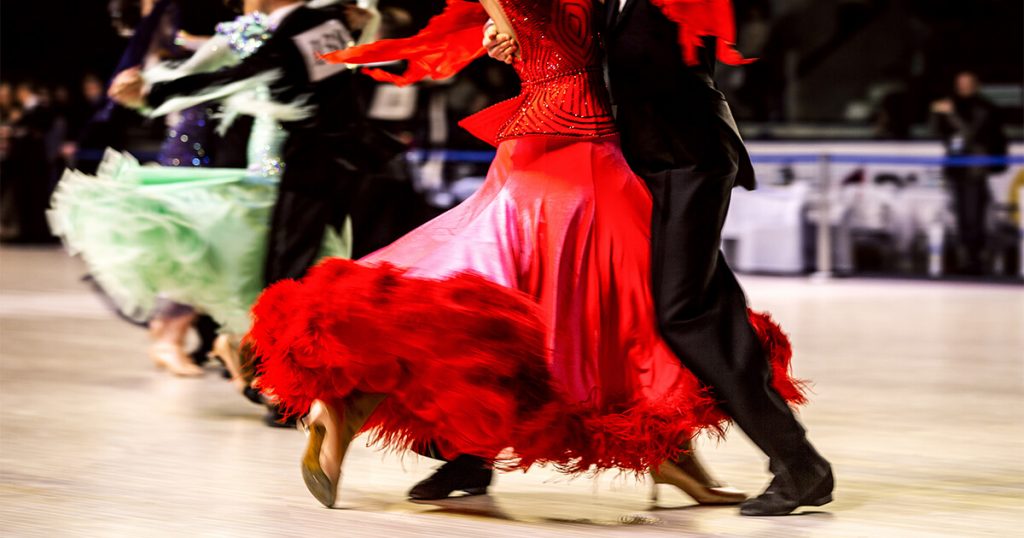| ROMYDANCE | BLOG

The origins of the Latin American dances
Extremely popular in Europe too, the Latin American dances are often confused with the Caribbean and Cuban ones. But in reality, they are very different dances, with different origins and movements. Despite this confusion, the latin american dances spread, becoming teached in dance schools all over the world.
Those dances are part of the biggest category of Sport Dance and there are professional dancers that participate in competitions.
Romy Dance collaborates with International dance experts, presenting his footwear during the most important competitions. Our Latin American’s shoes are made to accompany your foot during every movements of the dance. We boast special soles such as the “stop and go”, the influx, for a 360 degree rotation and the “grip-latin” insole, which will prevent your foot from slipping.
But do you know the history of the Latin American dances? Firstly, let’s make a short resume of which they are: Rumba, Cha Cha Cha, Samba, Paso Doble and Jive.
Cames from Cuba as the majority of the Latin American dances, and made his debut at the beginning of 1900 thanks to the peasant, which used the music to hang out while working. They didn’t have instruments, so they used what nature offered to them: woods and kitchen’s tools. Doing that, they made a catchy rhythm, based on very sensual hips movements.
A dance that has its origins in Brazilian religious music, with strong and melodic tones. This music is named from the African workers employed on sugar cane plantations and was used both as entertainment and as a way to curry favor and thanks the gods. The Samba danced today in competitions, has been slowed down and very choreographic movements have been inserted, making the dance extremely interesting to watch.
Another dance from Cuba that spread all over the United States from the end of the Second World War. The original Cha Cha Cha has extremely fast movements that have been slowed down following his spread not only in the US but also in Europe. Even today, we don’t really know the origins of the name of this dance; someone says that is an onomatopoeic sound, someone that is the name of a cuban rattle. Both options are possible, because the rhythm of the dance is 4/4 “one, two, three, cha cha cha”.
This dance, in contrast with the other ones which came from South America, was born in Europe, more precisely in Spain. Always linked to bullfighting, is an extremely choreographic and artistic dance. The partners mimic what happens during bullfighting: the man is the bullfighter and the woman is the red drape that catches the bull’s attention. Is a dance that puts all the body in movements, very snappy and, for this reason, is quite difficult to learn and dance it.
This dance is perhaps the most energetic of Latin American dances and, initially, it was danced only by the African-americans, who were able to best represent its movements. With the spread in Europe and the rest of the world, the movements have been changed and perfected, but the Jive still keeps its spectacularity intact. Characterized by an extremely frenetic rhythm, is based on 8 energetic and stylistic steps.
Are you looking for Latin American shoes?
Discover our section dedicated to American Latin dances!
| ROMYDANCE | guida alle taglie
Europe size | 33.5 | 34 | 35 | 35.5 | 36 | 37 | 37.5 | 38 | 39 | 39.5 | 40 | 41 | 41.5 | 42 |
UK Size | 1.5 | 2 | 2.5 | 3 | 3.5 | 4 | 4.5 | 5 | 5.5 | 6 | 6.5 | 7 | 7.5 | 8 |
USA Size | 4 | 4.5 | 5 | 5.5 | 6 | 6.5 | 7 | 7.5 | 8 | 8.5 | 9 | 9.5 | 10 | 10.5 |
Lunghezza piede in cm | 20.5 | 21 | 21.5 | 22 | 22.5 | 23 | 23.5 | 23.7 | 24 | 24.5 | 25 | 25.5 | 26 | 26.5 |
Europe size | 38 | 38.5 | 39 | 40 | 40.5 | 41 | 42 | 42.5 | 43 | 44 | 44.5 | 45 | 46 | 46.5 | 47 |
UK Size | 5 | 5.5 | 6 | 6.5 | 7 | 7.5 | 8 | 8.5 | 9 | 9.5 | 10 | 10.5 | 11 | 11.5 | 12 |
USA Size | 6 | 6.5 | 7 | 7.5 | 8 | 8.5 | 9 | 9.5 | 10 | 10.5 | 11 | 11.5 | 12 | 12.5 | 13 |
Lunghezza piede in cm | 23.5 | 24 | 24.5 | 25 | 28.5 | 26 | 26.5 | 26.7 | 27 | 27.5 | 28 | 28.5 | 29 | 29.5 | 30 |
Europe size | 29 | 10 | 30.5 | 31 | 32 | 32.5 | 33 | 34 | 35 | 36 | 36.5 | 37 | 37.5 | 38 | 39 | 39.5 |
UK Size | 11 | 12 | 13 | 1 | 2.5 | 3 | 3.5 | 4 | 4.5 | 5 | 5.5 | 6 | ||||
USA Size | 11.5 | 12.5 | 13.5 | 1 | 1.5 | 3 | 3.5 | 4 | 4.5 | 5 | 5.5 | 6 | 6.5 | |||
Lunghezza piede in cm | 17 | 17.5 | 18 | 18.5 | 19 | 19.5 | 20 | 20.5 | 21.5 | 22 | 22.5 | 23 | 23.5 | 24 | 24.5 | 25 |